
The World of Miniatures
October 12, 2021
Do you know the Souvenir of Drdla? I’d guess probably not, unless you’re of a certain age (old). I’m of that certain age, and I played the Souvenir as a teenager, but it was already going out of style. For the generation of violinists before mine, however, it was almost a requirement to play this modest little work. Although the Czech composer Franz Drdla (1868–1944) composed three operettas, a violin concerto, several orchestral works, and two piano trios, he is mostly known for his Souvenir. Is the Souvenir a towering masterpiece? No. Is it a flashy virtuoso showpiece? No. In fact, it’s what you might call a sweet but relatively inconsequential work of under four minutes, which belongs to the then-popular world of musical miniatures. Such great violinists as Jascha Heifetz, Mischa Elman, Yehudi Menuhin, and Joseph Szigeti played the Souvenir on their recital programs, and you can hear many of their recordings of it on YouTube.
Nowadays, recitals for violin and piano are not so much in vogue, but, if they exist at all, they’re mostly serious affairs. Recitals often consist of “all” programs—for example, all Bach, all Mozart, all Beethoven, all Hindemith (attending that last one gave me a serious case of heartburn). Or. they may begin with substantial works followed by something contemporary, and possibly end with a brilliant show-off piece.
What present-day recitals lack are the miniatures, or, by another name, the salon pieces that were cherished by performers and music lovers alike, and that ended many programs during the first half of the twentieth century. There would be a consequential first half, followed after intermission by such works as the Meditation from the opera Thaïs by Jules Massenet, La Capricieuse by Edward Elgar, Cortège by Lili Boulanger, the Zephyr by Jenö Hubay, or any number of works by Fritz Kreisler. The best of these beautifully crafted miniatures might bring a tear to your eye or a smile to your uplifted face.
Miniatures, however, have always found themselves in an oddly vulnerable position. If a violinist performs, say, the Beethoven Violin Concerto badly, you’d advise him to go home and practice, but the Concerto itself unquestionably remains unscathed as a monumental work. Not so with Drdla’s Souvenir. Played well, the work has a certain charm, but played poorly, it loses any musical value and becomes almost laughable. (The comedian Jack Benny played the Souvenir as a gag routine at different times with violinists Joseph Szigeti and Isaac Stern). But when you hear Mischa Elman play the Meditation, Jascha Heifetz La Capricieuse, Joseph Szigeti the Zephyr, or Fritz Kreisler one of his own miniatures, your heart just may skip a beat.
The artist-violinists of that generation had uniquely different personalities, but playing these little gems was mother’s milk to them all. And so, when such violinists as Josef Gingold and Oscar Shumsky performed compositions of Fritz Kreisler, they did not sound like Kreisler playing his own works in heart-stopping fashion, but their style—the rubato, the sensitivity, the nuance—was unquestionably of that time. And irresistible!
Miniatures may not be mother’s milk for today’s musicians, but many continue to love these little morsels and are able to capture their essence. Several years ago, four participants at the Marlboro Festival—Danbi Um and Nikki Chooi, violins, Sally Chisholm, viola, and Lionel Cottet, cello—studied and performed Fritz Kreisler’s String Quartet in A Minor, a four-movement work that at least in part consists of several miniatures strung together. Undoubtedly, Sally, the group’s senior member, was instrumental in helping the young players channel Kreisler. At the performance I felt as if the quartet had miraculously transported me by time machine back to Kreisler’s era, where noble refinement, flair, and heart-on-the-sleeve playing reigned.
When I attended the Curtis Institute of Music in the 1950s, we students fondly referred to musical miniatures as ice-cream numbers. And what’s not to like about ice cream? But my attention and my work in school and then out in the professional world was inevitably directed toward the enormous, varied, and substantive classical music repertoire. (As a member of the Guarneri String Quartet, that included some “all” concerts—all Mozart, all Beethoven, and all Bartok.)
Still, I retained a soft spot in my heart for those delicious ice-cream numbers. At one point, as a Curtis Institute of Music faculty member, an out-of-the-blue idea popped into my head: why not give one of those old-fashioned violin and piano recitals with meat and potatoes on the first half, and dessert after intermission? I asked David Levine, then a gifted piano student studying with Rudolf Serkin at the school, to join me as pianist.
At our first rehearsal, the meat and potatoes went well enough. Those works were in the category of central European masterpieces—challenging but certainly well-known territory for both David and me. It was the little pieces on the program that gave us unexpected trouble. Bringing out their essence was a risky business—on the one hand easily overplayed, on the other devolving into utter blandness.
And then we came to A La Valse by Victor Herbert. Years earlier, I had heard Jascha Heifetz’s irresistible recording of the work. A La Valse is a cream puff, a bonbon, a crêpe suzette with champagne, and it charmed my socks off. So why not have some fun and put it on our program, I thought. But when David and I read through A La Valse for the first time, there was no champagne, no crêpe suzette. Rather, it felt like we had served up a stale, three-day-old bagel. Where was the waltz lilt, the playfulness, that moment of mock seriousness, and the delicious bit of coquetry at the end?
For the better part of the next hour, almost as much time as we had spent on each of those first-half masterpieces, David and I slaved away at A La Valse. There was something humbling about a piece of fluff lasting less than two minutes bringing so-called serious musicians to their knees, but A La Valse had done that.
Call it what you will—a piece of fluff, inconsequential, a little nothing compared to the Everests of classical music, but Victor Herbert had produced a gem, and in its most modest way a small-scale work of perfection.
How successful was our eventual performance of A La Valse? I have no idea. Possibly buried in the Curtis archives is a recording of that “old fashioned” recital, but please don’t go there. I can already hear the complaints about A La Valse: “You call that charm, lilt, playfulness???”
Since that maiden voyage (for both David and me), I’ve dared to continue performing A La Valse and have even recorded it, but, based on the battle scars inflicted by those innocent-seeming miniatures, I have a bit of advice for you of the younger generation:
Beware of ice cream numbers.
Subscribe
Sign up to receive new stories straight to your inbox!








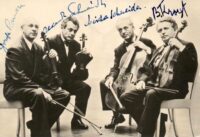





















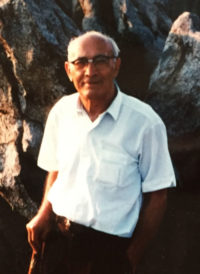


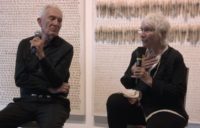


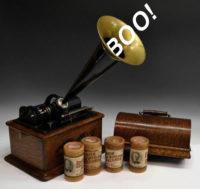
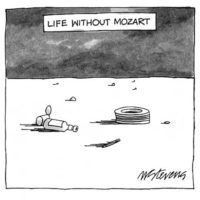















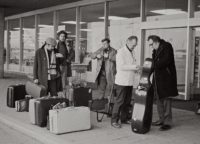



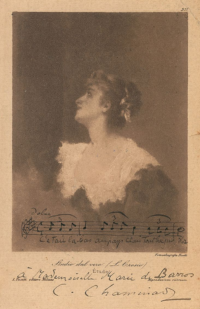




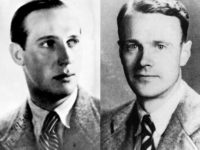


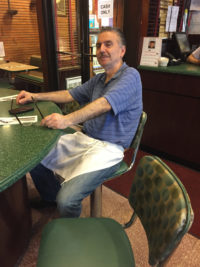



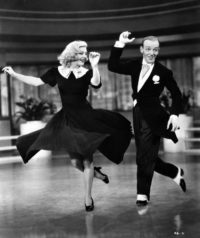







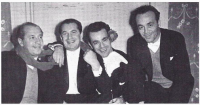
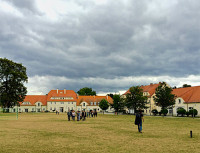
























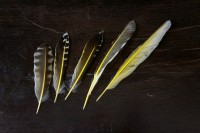

























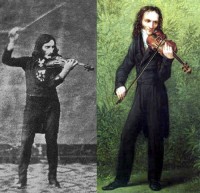



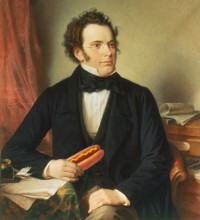

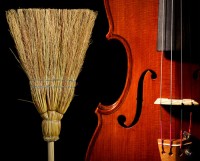





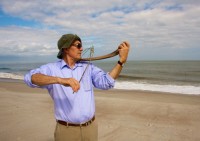























Comments
MissDeLay called if “Bits and pieces”. We called it Candy.
I’ll take mine with whipped cream.
We enjoy your stories and have come to hear you in person in early times. We came to your Master Class in Oxford MS. Continue to have great fun.
Thanks for the lovely story (stylishly written) & beautiful playing to end in the video link (I have that CD & it’s all a winner by the way)…ooh find me a nice wafer for that ice cream!!
I love the ice cream numbers. Good for the artists and audience. Like me singing Habanera from Carmen as an encore. whynot? Margot
There are orchestral ice cream pieces, too. Sir Thomas Beecham called them lollipops.
Thank you for the Miniatures remembrances.
I first played Dryla’s Souvenir 73 years ago as I entered my teen years because it was close to first in a book of short violin pieces I had. Now in my dotage with all sorts of reasons to close my violin case for good I am reverting to it and all the miniatures I can find. With the pandemic closing access to chamber music opportunities and no particular reson to count time religiously I find it great fun to read through these little pieces I find on IMSLP.org
Arnold,
Your strawberries are always in season. Your conversational prose speaks directly to me as if we were sitting at a table sharing a bottle of wine.
Thank you!
Harvey
Thank you for a wonderful day-brightener. Being also of that “certain age” and having also learned and performed the Drdla Souvenir as a teenager, I agree that we’re missing so much, no longer hearing all these gems!
ah, a breath of fresh air! Time to put these in my fingers w/a good violinist! charming, delightful!
So much to say here! My teacher called these “one page wonders” and we always had one on our stand every week. And he said you had to learn how to speak paragraphs before you could tell the whole story of a concerto or sonata. My collaborator and I have done whole concerts of miniature music. Thanks for the story. B
I love these pieces! When I was in college studying cello, my teacher always had one on my stand — he called them “one page wonders”. He used to say — you have to learn to speak paragraphs before you can tell the whole story of a sonata or concerto. My duo partner and I (prior to Covid) did a whole recital of short pieces. They are wonderful to study and do indeed teach you to “speak paragraphs”.
I love ice cream with your warm fudge on top, and what a delight to hear you play and to receive your intimate memories in small portions to bring cheer on this rainy Paris day.
I’m married to Elsa Krasner Miller, the daughter of Louis Krasner and the niece of Felix Galimir who is a great admirer of yours. I am too. I heard you perform many ties with the Quartet including your visit to Purdue U where I was teaching from 1967-1974. We also heard you in recital and performing the Bach Chaconne in NY. Re musical bon bone,I don’t think that either Louie or Felix or Szigeti with whom you studied or Louie’s favorite violinist Nathan Milstein , did that stuff fbut Jascha Heifetz definitely did as you note, although you didn’t mention his classic transcription of ‘It ain’t necessarily so’ by his friend George Gershwin’s opera Porgy and Bess which I heard him perform. Thanks much for all your performances and musical memories.
Hi Arnold,
What a great article. And so true. I auditioned for my first music camp with a simple piece of Kreisler which I loved. Big mistake, as I ended up in the third orchestra, second violins. Lesson learned.
A friend of mine plays Drdla’s Vincenzo Panormo – a very flat model, beautifully suited to that elegant style of yesteryear.
I remember, in 1978, hearing Valery Klimov (with Leonid Blok) end his recital in the Adelaide Town Hall with Debussy’s En Bateau. Supremely delicious, with the silky sound of the Bergonzi unforgettable. Simple, but great skill from Klimov.
John Russell, Zürich
Leave a Comment
*/